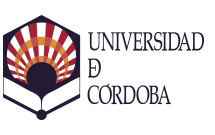Probabilistic assessment of the intake of trace elements by consumption of red deer (Cervus elaphus) and wild boar (Sus scrofa) meat
Autor
Sevillano Morales, Jesús
Sevillano-Caño, Jesús
Amaro López, Manuel Ángel
Cámara-Martos, F.
Editor
MDPIFecha
2023Materia
Trace elementsHunters
Game meat
Dietary intake
METS:
Mostrar el registro METSPREMIS:
Mostrar el registro PREMISMetadatos
Mostrar el registro completo del ítemResumen
The aim of this work was to study the nutritional value of game meat through the fulfillments of Dietary Reference Intakes (DRI) for trace elements (Co, Cr, Cu, Fe, Ni, Se, and Zn). A probabilistic model (@Risk) was developed based on the consumption data of hunter-consumers obtained from a previously published survey. Two game species widely consumed in Europe were selected: red deer (Cervus elaphus) and wild boar (Sus scrofa). Red deer muscle had the highest content of Cr (0.25 mg/kg) and Zn (44.3 mg/kg) and wild boar muscle recorded the highest Cu (2.23 mg/kg), Ni (0.60 mg/kg), and Se (0.19 mg/kg), showing statistically significant differences between the two species for these elements. No statistically significant differences were found for Fe between both game species (red deer: 52.9 mg/kg and wild boar: 53.3 mg/kg). Co content in this kind of meat was negligible for both species. The results obtained from the simulation of the probabilistic model with red deer indicated that a consumption once per week of this meat fulfills Cr, Fe, and Zn DRIs for the 95th percentile in hunter-consumers. Regarding wild boar, the values obtained also fulfill the Fe DRI and were between 61 and 75% for the rest of the trace elements analyzed.

